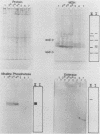Abstract
The cellular protein profiles and malate dehydrogenases, superoxide dismutases, alkaline phosphatases, and esterases from whole cell extracts of Candida spp. were studied with polyacrylamide gel electrophoresis. We investigated isolates that differed in their ability to assimilate sucrose as the sole carbon source. The protein and enzyme patterns of Candida tropicalis and its sucrose-negative variant "Candida paratropicalis Baker, Salkin, Pincus et D'Amato" were indistinguishable. Although the cellular protein and superoxide dismutase patterns of Candida albicans and its sucrose-negative variant "Candida stellatoidea" were quite similar, differences were noted in the profiles of the other enzymes studied. In addition, the C. stellatoidea isolates were found to be separable, on the basis of their enzyme profiles, into the same two types that have been reported by Kwon-Chung et al. (K.J. Kwon-Chung, B.L. Wickes, and W.G. Merz, Infect. Immun. 56:1814-1819, 1988).
Full text
PDF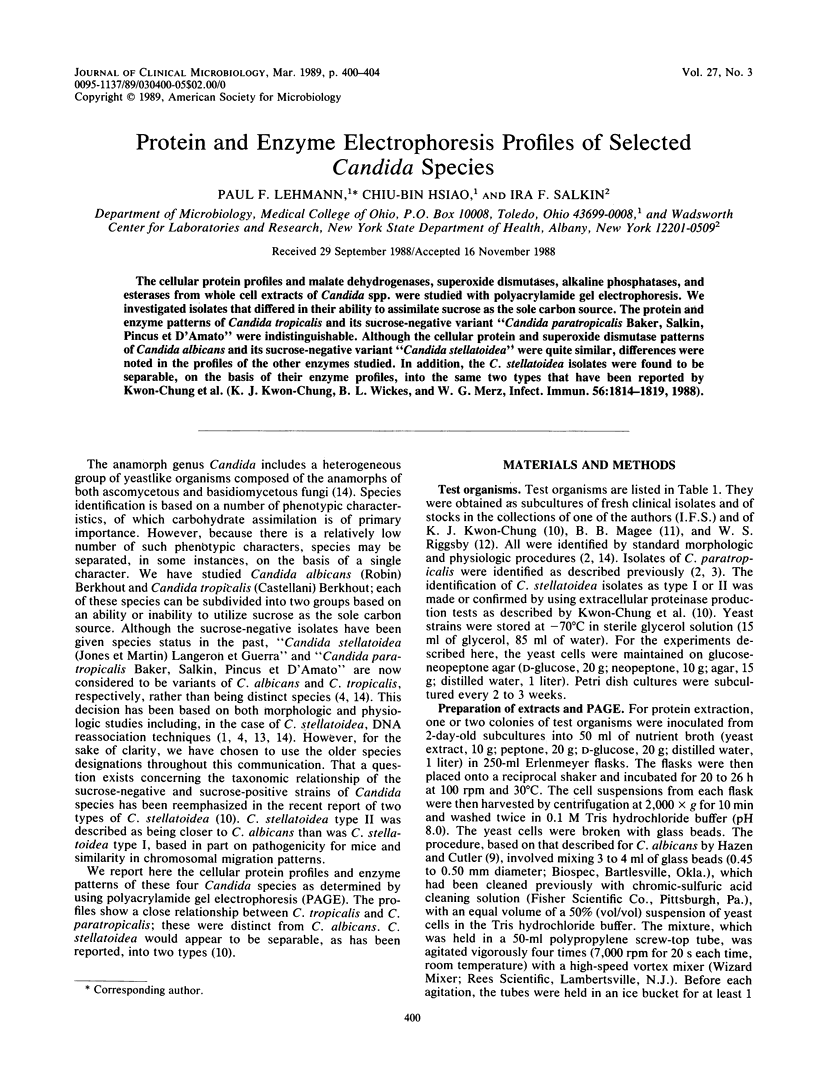
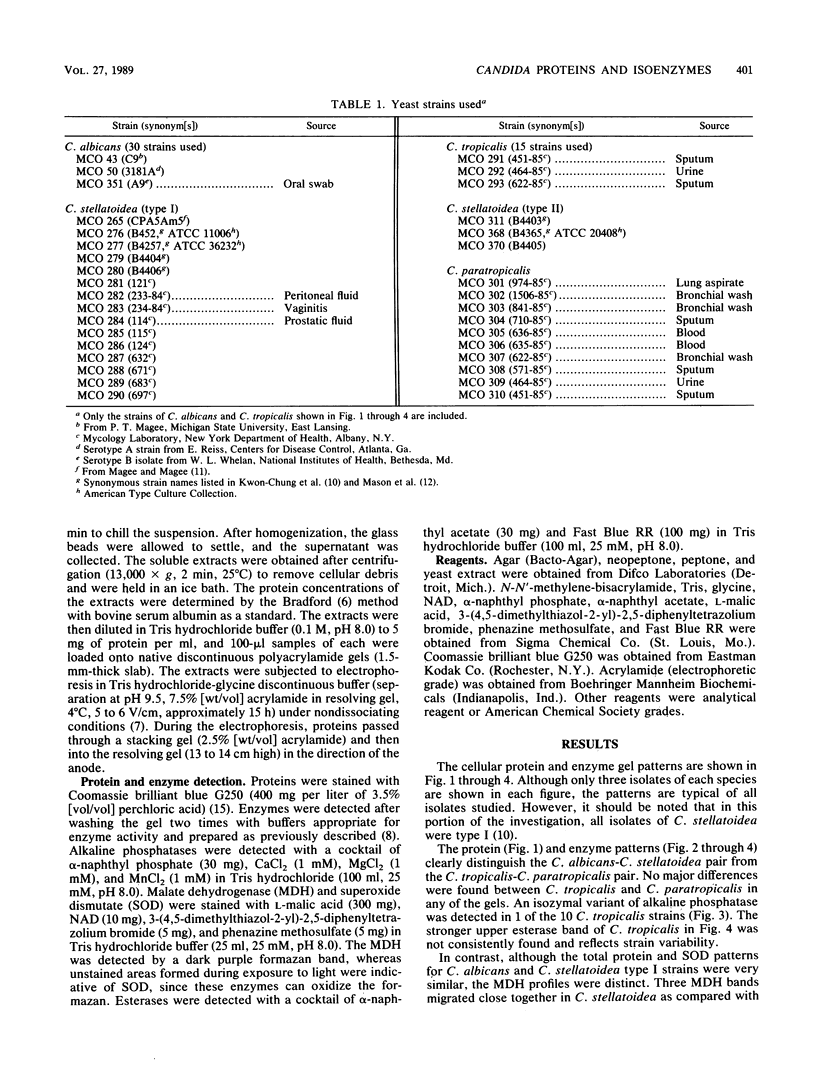
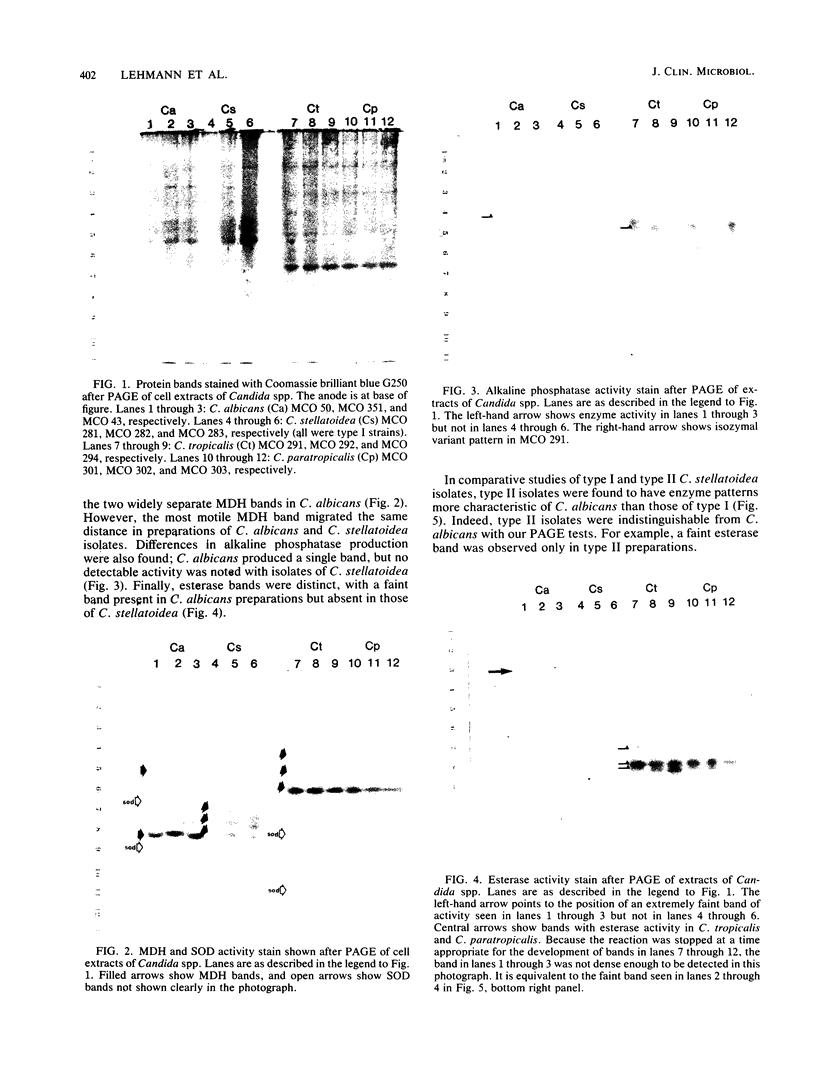
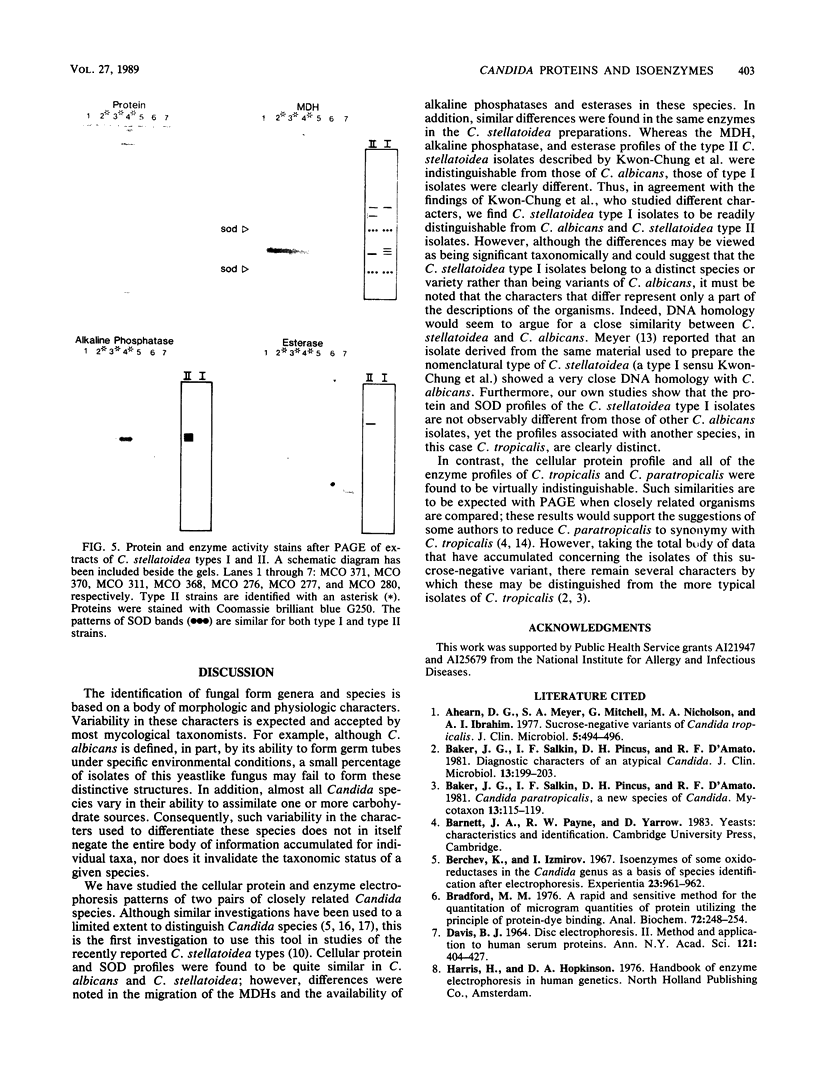
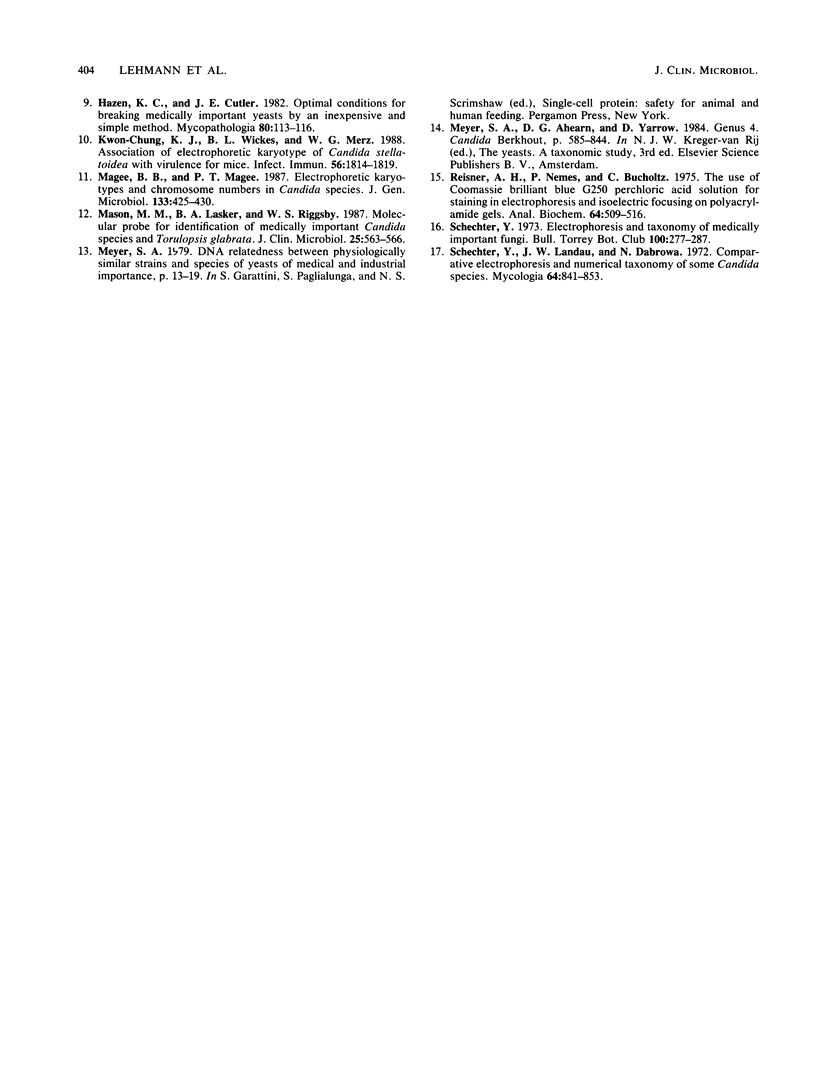
Images in this article
Selected References
These references are in PubMed. This may not be the complete list of references from this article.
- Ahearn D. G., Meyer S. A., Mitchell G., Nicholson M. A., Ibrahim A. I. Sucrose-negative variants of Candida tropicalis. J Clin Microbiol. 1977 Apr;5(4):494–496. doi: 10.1128/jcm.5.4.494-496.1977. [DOI] [PMC free article] [PubMed] [Google Scholar]
- Baker J. G., Salkin I. F., Pincus D. H., D'Amato R. F. Diagnostic characters of an atypical Candida. J Clin Microbiol. 1981 Jan;13(1):199–203. doi: 10.1128/jcm.13.1.199-203.1981. [DOI] [PMC free article] [PubMed] [Google Scholar]
- Berchev K., Izmirov I. Isoenzymes of some oxido-reductases in the Candida genus as a basis of species identification after electrophoresis. Experientia. 1967 Nov 15;23(11):961–962. doi: 10.1007/BF02136249. [DOI] [PubMed] [Google Scholar]
- Bradford M. M. A rapid and sensitive method for the quantitation of microgram quantities of protein utilizing the principle of protein-dye binding. Anal Biochem. 1976 May 7;72:248–254. doi: 10.1006/abio.1976.9999. [DOI] [PubMed] [Google Scholar]
- DAVIS B. J. DISC ELECTROPHORESIS. II. METHOD AND APPLICATION TO HUMAN SERUM PROTEINS. Ann N Y Acad Sci. 1964 Dec 28;121:404–427. doi: 10.1111/j.1749-6632.1964.tb14213.x. [DOI] [PubMed] [Google Scholar]
- Hazen K. C., Cutler J. E. Optimal conditions for breaking medically important yeasts by an inexpensive and simple method. Mycopathologia. 1982 Nov 19;80(2):113–116. [PubMed] [Google Scholar]
- Kwon-Chung K. J., Wickes B. L., Merz W. G. Association of electrophoretic karyotype of Candida stellatoidea with virulence for mice. Infect Immun. 1988 Jul;56(7):1814–1819. doi: 10.1128/iai.56.7.1814-1819.1988. [DOI] [PMC free article] [PubMed] [Google Scholar]
- Magee B. B., Magee P. T. Electrophoretic karyotypes and chromosome numbers in Candida species. J Gen Microbiol. 1987 Feb;133(2):425–430. doi: 10.1099/00221287-133-2-425. [DOI] [PubMed] [Google Scholar]
- Mason M. M., Lasker B. A., Riggsby W. S. Molecular probe for identification of medically important Candida species and Torulopsis glabrata. J Clin Microbiol. 1987 Mar;25(3):563–566. doi: 10.1128/jcm.25.3.563-566.1987. [DOI] [PMC free article] [PubMed] [Google Scholar]
- Reisner A. H., Nemes P., Bucholtz C. The use of Coomassie Brilliant Blue G250 perchloric acid solution for staining in electrophoresis and isoelectric focusing on polyacrylamide gels. Anal Biochem. 1975 Apr;64(2):509–516. doi: 10.1016/0003-2697(75)90461-3. [DOI] [PubMed] [Google Scholar]
- Shechter Y., Landau J. W., Dabrowa N. Comparative electrophoresis and numerical taxonomy of some Candida species. Mycologia. 1972 Jul-Aug;64(4):841–853. [PubMed] [Google Scholar]







